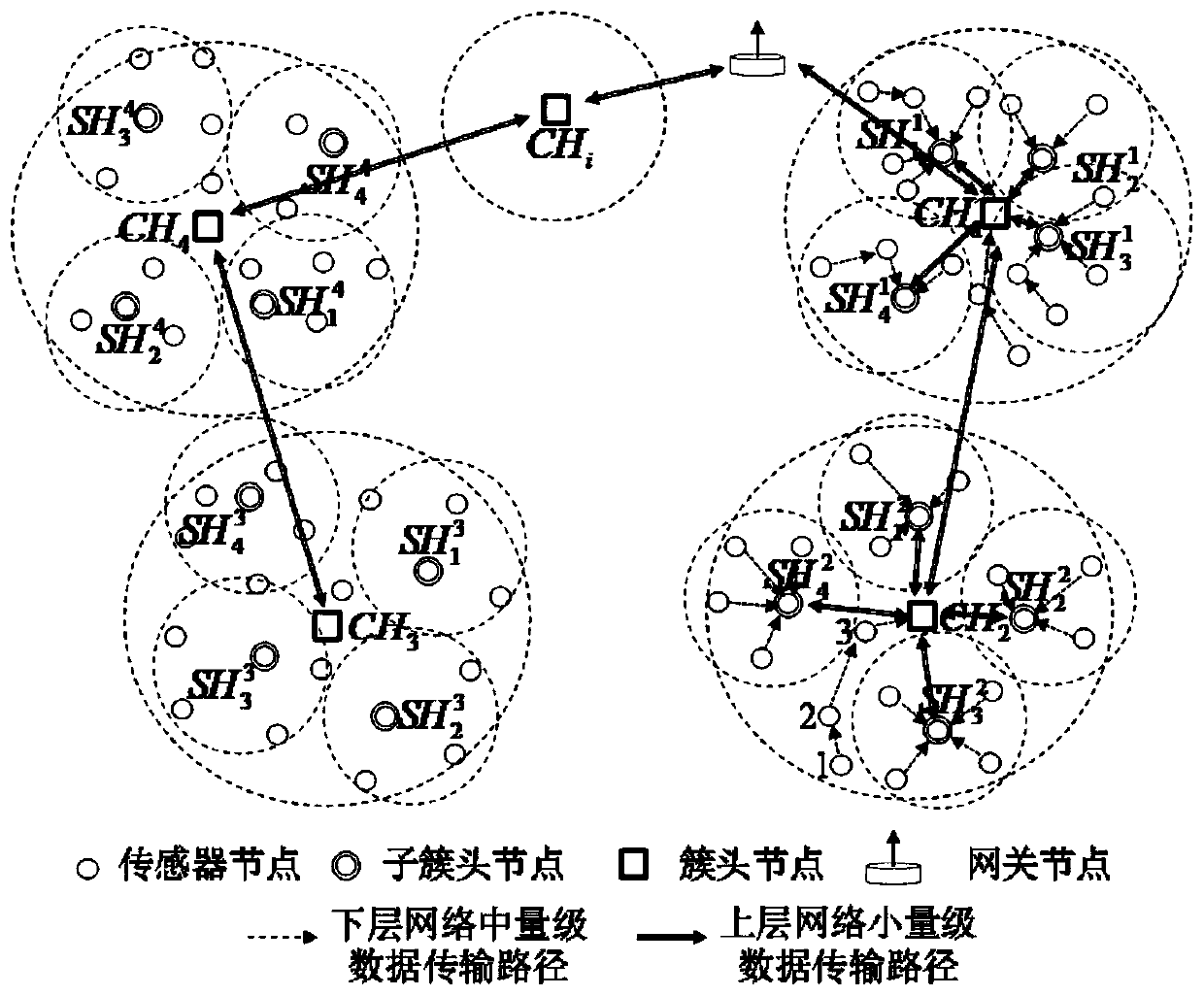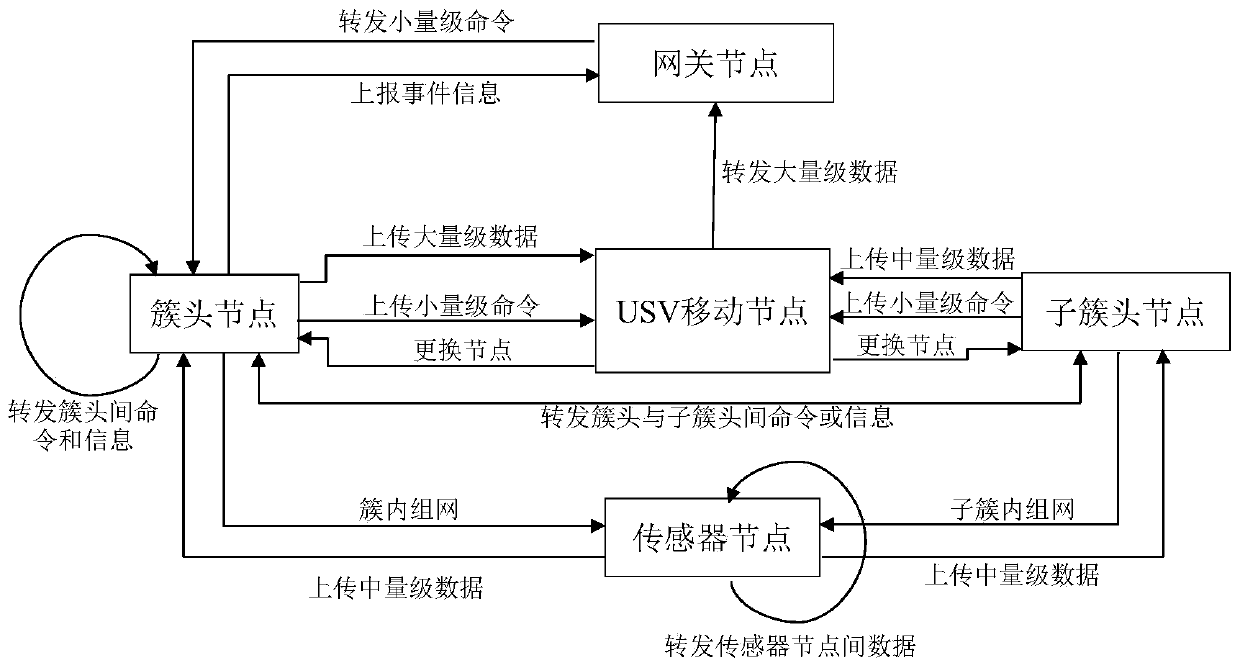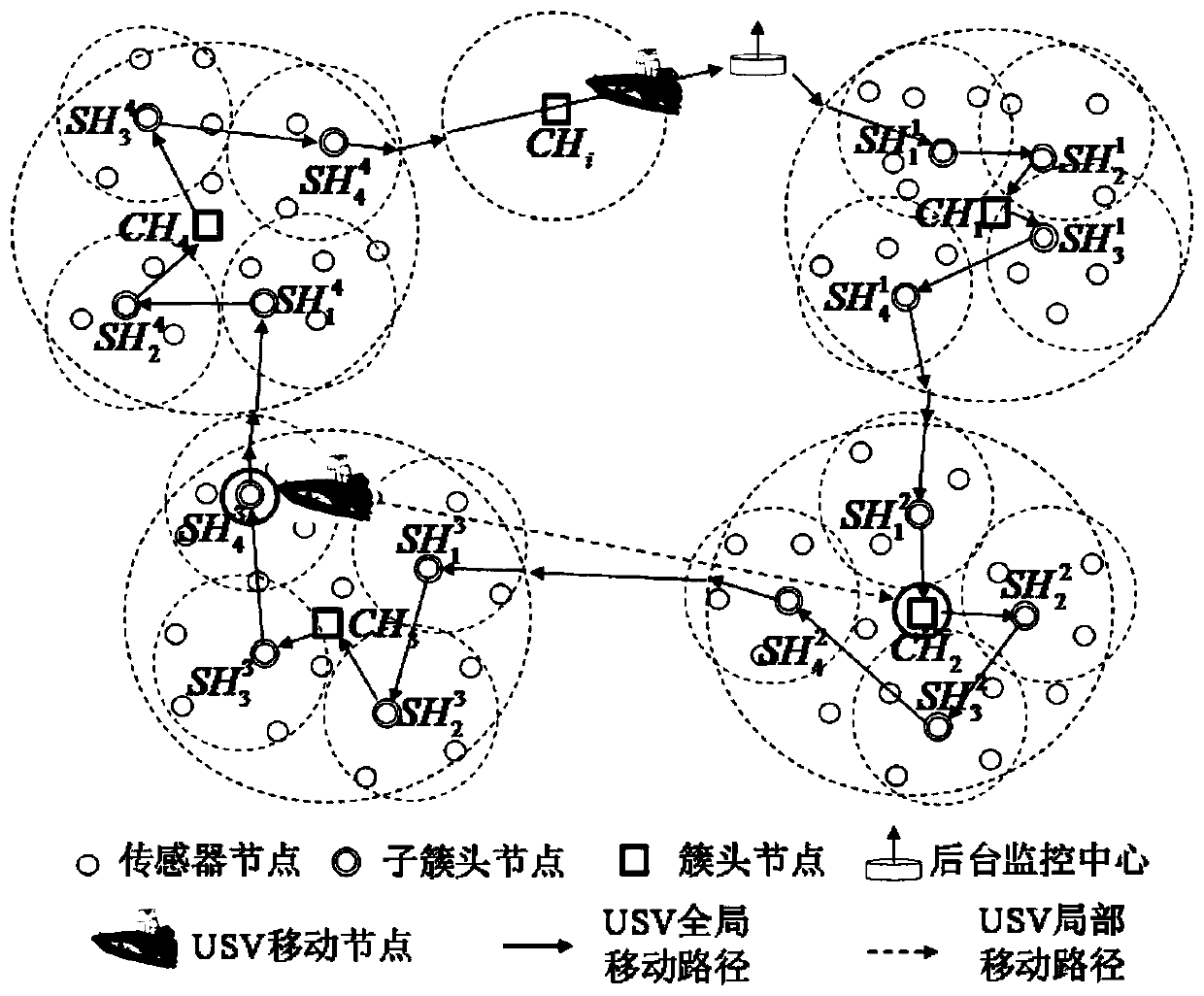Heterogeneous node cooperative sensing system and method for offshore self-organizing network
A self-organizing network and heterogeneous node technology, which is applied in network planning, network topology, and services based on specific environments, etc., can solve problems such as high importance of monitoring areas, difficulty in achieving node energy balance, and increasing node failure probability , to achieve the effect of increasing network coverage, realizing efficient maintenance and dynamic monitoring, reducing network energy consumption and packet loss rate
- Summary
- Abstract
- Description
- Claims
- Application Information
AI Technical Summary
Problems solved by technology
Method used
Image
Examples
Embodiment 1
[0032] In one or more embodiments, a heterogeneous node cooperative sensing system for maritime self-organizing networks is disclosed, including: sensor network nodes, cluster head nodes and gateway nodes respectively deployed on the sea surface to form a cluster structure network ; select several optimal sub-cluster head nodes in each cluster, the sub-cluster head nodes and cluster head nodes in each cluster form a star network, and the sensor network nodes and sub-cluster head nodes within the sub-cluster form a multiple Jump routing network, the remaining sensor nodes outside the coverage of all sub-clusters in the cluster will directly form a multi-hop routing network with the cluster head node through a multi-hop method, such as figure 1 1->2->3->CH in 2 .
[0033] Specifically, sensor nodes (including sub-cluster head nodes) are densely deployed on the sea surface, with limited resources and small storage space, and are suitable for wireless multi-hop forwarding of medi...
Embodiment 2
[0066] In one or more embodiments, a heterogeneous node cooperative sensing method for maritime self-organizing networks is disclosed. First, the optimal sub-cluster head nodes in all clusters in the network are selected to establish a three-layer network structure; and then The USV plans the shortest path, and moves through each cluster head and sub-cluster head node in the network to complete the storage and forwarding of the sensing data; finally, the USV planning path is changed in real time according to the command, so as to realize the data collaborative sensing of all heterogeneous nodes.
[0067] refer to Figure 4 , the method of this embodiment specifically includes the following steps:
[0068] 1) Selection of sub-cluster head nodes: First, deploy sensor network nodes and cluster head nodes on the sea surface to form a cluster structure network, and then calculate the optimal The sub-cluster head node, get the optimal set of sub-cluster head nodes;
[0069] 2) Thr...
PUM
 Login to View More
Login to View More Abstract
Description
Claims
Application Information
 Login to View More
Login to View More - R&D
- Intellectual Property
- Life Sciences
- Materials
- Tech Scout
- Unparalleled Data Quality
- Higher Quality Content
- 60% Fewer Hallucinations
Browse by: Latest US Patents, China's latest patents, Technical Efficacy Thesaurus, Application Domain, Technology Topic, Popular Technical Reports.
© 2025 PatSnap. All rights reserved.Legal|Privacy policy|Modern Slavery Act Transparency Statement|Sitemap|About US| Contact US: help@patsnap.com



